Material Characteristics and Machining Challenges
Ceramic materials present unique machining challenges due to their extreme hardness, brittleness, and low fracture toughness. Advanced ceramics like alumina (Al₂O₃), zirconia (ZrO₂), silicon nitride (Si₃N₄), and silicon carbide (SiC) exhibit Vickers hardness values ranging from 1,500 to 3,000 HV, requiring specialized tooling and processes. The material’s tendency toward brittle fracture rather than plastic deformation necessitates careful control of cutting forces and vibration during machining. Thermal properties further complicate the process – while ceramics maintain strength at high temperatures, their low thermal conductivity (3-30 W/m·K) leads to heat concentration in the cutting zone, accelerating tool wear. These factors combine to make ceramic machining significantly more complex and costly than metal cutting operations, requiring specialized equipment and methodologies.
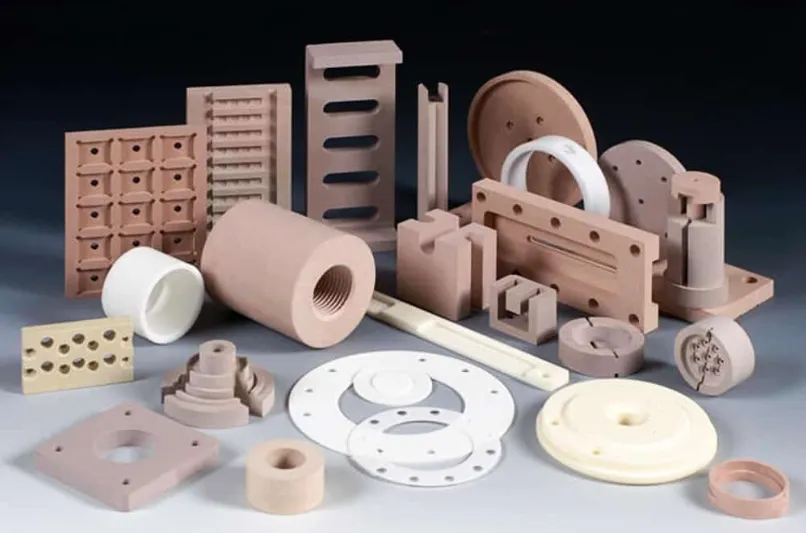 Machine Tool Requirements
Machine Tool Requirements
CNC machining centers for ceramics require exceptional rigidity, vibration damping, and precision exceeding standard metal-cutting specifications. The machine frame typically incorporates polymer concrete or granite components for enhanced damping capacity, with vibration levels maintained below 0.5 μm/s to prevent micro-fracturing. High-torque spindle drives (15-40 kW) provide the necessary power for material removal, while maintaining rotational accuracy within 1 μm TIR. Linear motors or precision ball screws with preloaded nuts achieve the sub-micron positioning accuracy required for fine feature machining. The machine environment must maintain tight thermal stability (±0.5°C) to prevent dimensional variations in both workpiece and machine structure. Specialized coolant delivery systems provide high-pressure lubrication (up to 100 bar) to control heat generation and remove fine ceramic particulates that could damage machine components.
Cutting Tool Technology
Diamond-based tooling represents the only viable option for machining advanced ceramics, available in several configurations:
- Polycrystalline Diamond (PCD) Tools: Brazed or mechanically clamped inserts with 10-25 μm grain size for roughing operations
- Chemical Vapor Deposition (CVD) Diamond Coated Tools: Thin-film coatings (10-30 μm) on carbide substrates for finishing
- Single Crystal Diamond Tools: Ultra-precision tools for optical quality surface generation
- Diamond Grinding Wheels: Resin or metal-bonded wheels with diamond grit sizes from 20 μm to 0.5 μm
Tool geometries feature highly positive rake angles (15°-30°) to minimize cutting forces, with sharp cutting edges maintained to within 1 μm tolerance. Tool life remains limited – typically 10-60 minutes of cutting time before edge degradation affects surface quality. Advanced tool condition monitoring systems using acoustic emission sensors or power consumption analysis help predict tool failure before workpiece damage occurs.
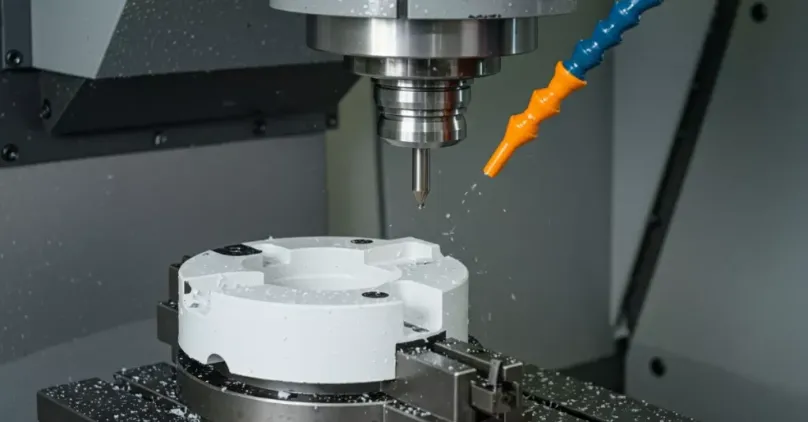
Machining Strategies and Parameters
Ceramic machining employs a hybrid approach combining elements of milling, grinding, and polishing:
- Roughing Operations: Utilize coarse-grain diamond tools (100-400 μm grit) with depths of cut up to 0.5 mm and feed rates of 100-500 mm/min
- Semi-Finishing: Medium-grain tools (50-100 μm) with reduced parameters (0.1-0.3 mm depth, 50-200 mm/min feed)
- Finishing: Fine-grain tools (<50 μm) performing shallow cuts (0.01-0.1 mm) at slow feeds (10-50 mm/min)
Spindle speeds vary from 3,000-10,000 RPM for larger tools to 20,000-60,000 RPM for small diameter cutters. The machining process generates both brittle fracture and plastic flow material removal mechanisms, with the latter being preferred to achieve better surface integrity. Ductile-regime machining becomes possible when controlling undeformed chip thickness below a critical value (typically 0.1-1 μm depending on ceramic type), allowing for optical-quality surfaces with Ra < 0.01 μm.
Coolant and Lubrication Systems
Specialized coolants address ceramic machining’s unique requirements:
- High-Pressure Coolant Delivery: 70-100 bar systems ensure effective heat removal and chip evacuation
- Oil-Based Fluids: Provide better lubrication than water-based coolants for diamond tools
- Minimum Quantity Lubrication (MQL): Used for finishing operations to minimize coolant contamination
- Cryogenic Cooling: Liquid nitrogen applications show promise in reducing thermal stress
Coolant filtration becomes critical, with multi-stage systems removing sub-micron ceramic particles that could damage machine components. Centrifugal separators and magnetic filters maintain coolant cleanliness below 5 μm particulate size.
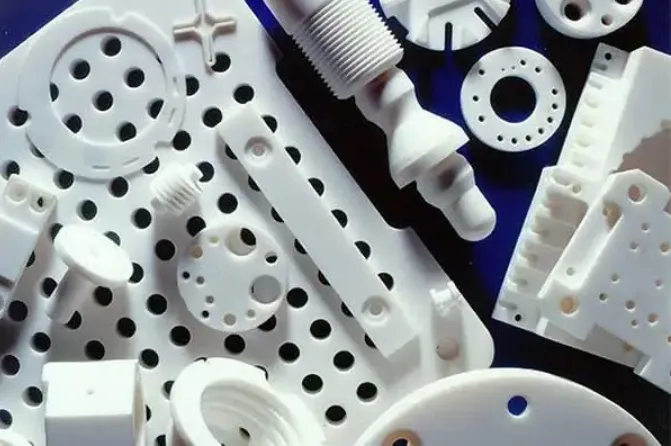
Workholding and Fixturing
Ceramic workpiece fixation requires careful consideration of the material’s brittleness:
- Vacuum Chucks: For flat ceramic plates, using porous ceramic or specialized vacuum pads
- Low-Stress Mechanical Clamps: Incorporating compliant materials to distribute clamping forces
- Adhesive Fixturing: Temporary bonding with heat-reversible adhesives for complex shapes
- Magnetic Workholding: For ferrite ceramics using specialized chuck designs
Fixtures must provide uniform support to prevent stress concentration, with locating accuracy within 2-5 μm for precision components. Vibration-damping materials like polymer concretes are often incorporated into fixture designs.
Quality Control and Inspection
Ceramic component verification requires specialized metrology approaches:
- Non-Contact Measurement: White light interferometry and laser scanning avoid surface damage
- High-Resolution CMMs: Equipped with ruby tips and low measuring force (<0.1N)
- Surface Finish Analysis: Atomic force microscopy (AFM) for nanoscale characterization
- Subsurface Damage Detection: Scanning acoustic microscopy (SAM) or micro-CT scanning
Dimensional tolerances for precision ceramic components typically range from ±5 μm for structural parts to ±0.5 μm for optical elements. Surface finish requirements vary from Ra 0.4 μm for mechanical seals to Ra < 0.01 μm for laser components.
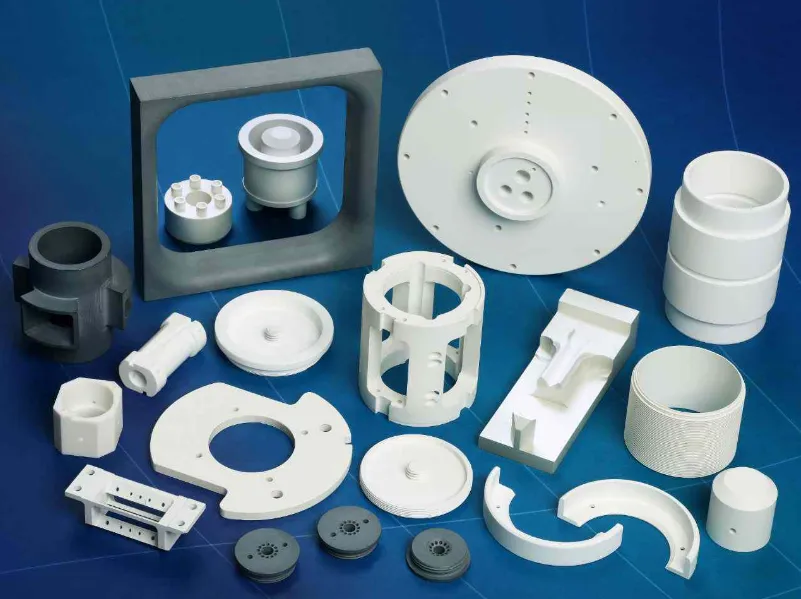
Industrial Applications
CNC-machined ceramics serve critical functions across industries:
- Medical: Dental implants, joint replacements, surgical tools
- Electronics: Insulating substrates, semiconductor components
- Aerospace: Turbine blades, radomes, thermal protection systems
- Energy: Fuel cell components, heat exchangers
- Optics: Laser gain media, mirror substrates
Each application demands specific machining approaches – for example, dental zirconia requires different toolpaths than silicon carbide rocket nozzles. The medical industry particularly values the ability to machine patient-specific ceramic implants with complex geometries.
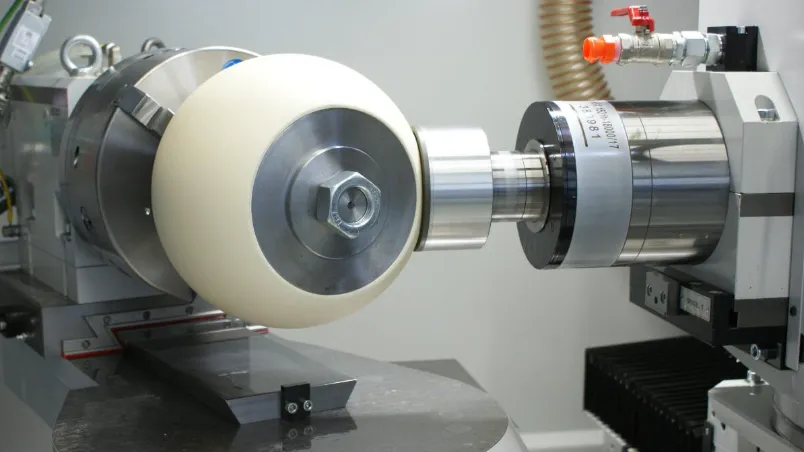
Emerging Technologies
Innovations continue to advance ceramic machining capabilities:
- Laser-Assisted Machining: Localized heating reduces material hardness during cutting
- Ultrasonic Vibration-Assisted Machining: Reduces cutting forces and improves surface finish
- Hybrid Additive/Subtractive Processes: 3D printed near-net shapes finished by CNC machining
- AI-Based Process Optimization: Machine learning algorithms predicting optimal parameters
- Nanoparticle-Enhanced Coolants: Improving heat transfer and surface quality
These developments aim to reduce the current limitations of ceramic machining – high tooling costs, slow material removal rates, and surface/subsurface damage concerns. The field continues evolving to meet growing demand for high-performance ceramic components across advanced industries.




